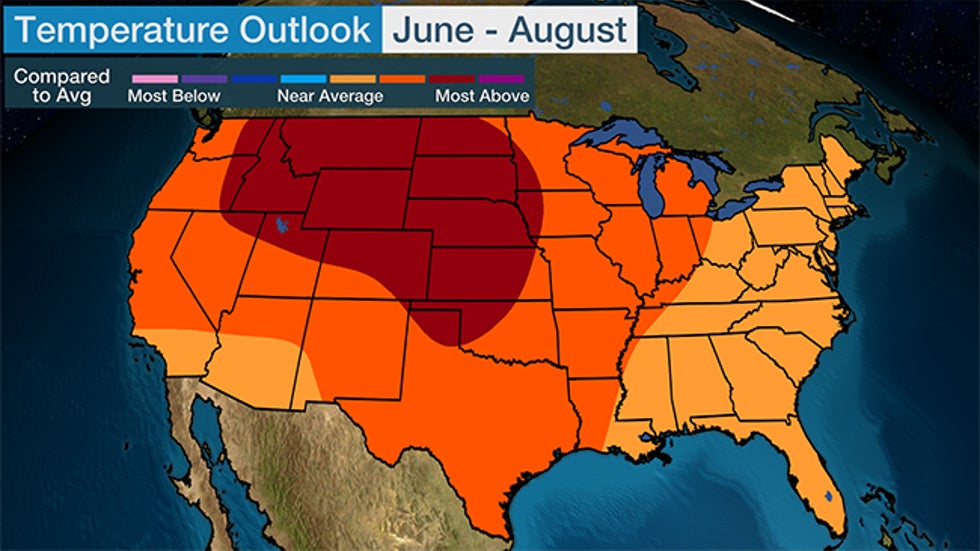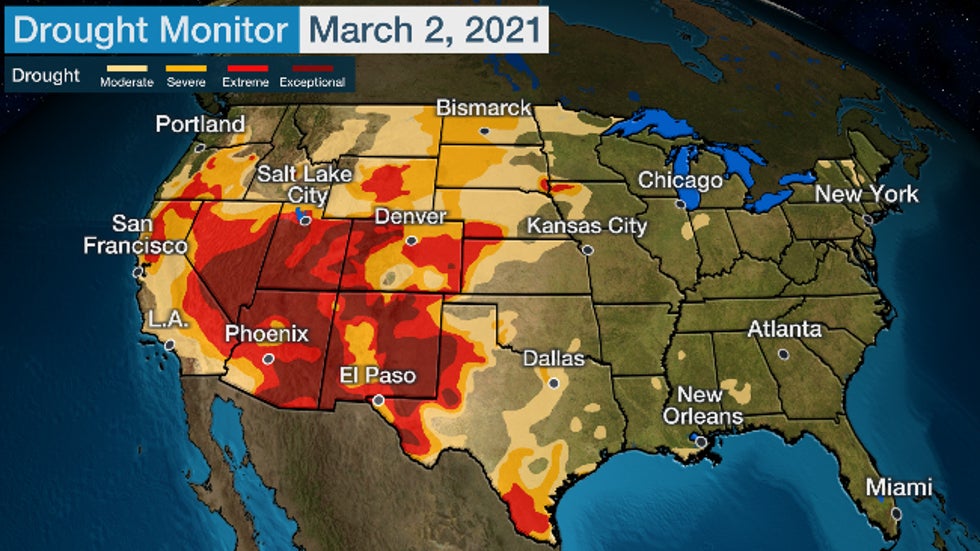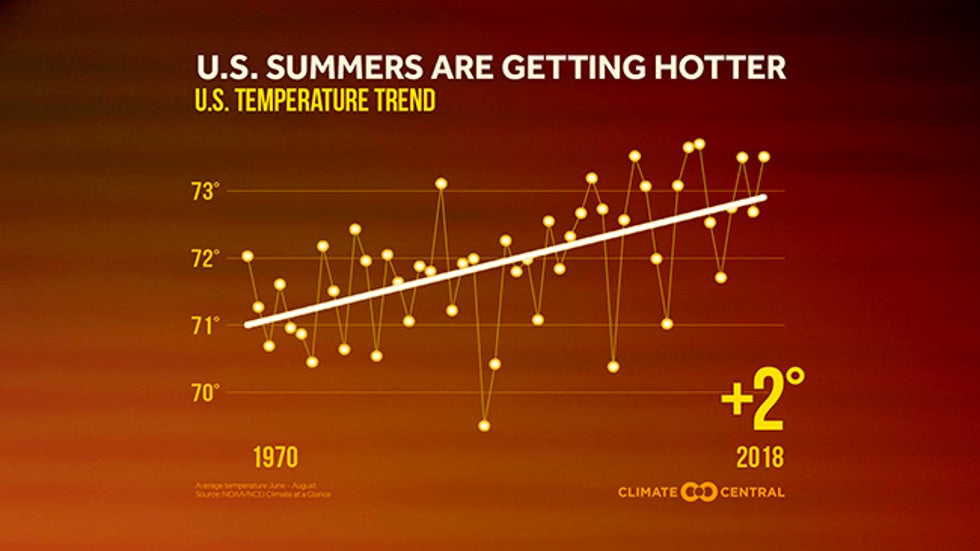weather.com meteorologists
Summer 2021 is expected to be hot across much of the nation, particularly in the western and central United States, according to the latest three-month outlook from The Weather Company, an IBM Business.
A hotter than average June through August is expected from the West Coast to the Mississippi Valley and western Great Lakes. The northern and central Rockies into the northern and central Plains have the best chance for a hot summer.
Meanwhile, much of the East and Southeast are expected to be near or slightly warmer than average this summer.

Fading La Niña, Hot Summer
One reason for this generally hot forecast is La Niña, the periodic cooling of water in the eastern equatorial Pacific Ocean that influences weather patterns near the U.S. and elsewhere.
After reaching a typical peak in late fall, the La Niña is now gradually weakening in spring. And past summers in similar situations have been quite warm.
SPONSORED: 25% off storewide at Andrew Marc
"If we look at summers following first-year La Niña winters, we can see a very hot signal across most of the western and northern U.S.," said Todd Crawford, chief meteorologist with The Weather Company.
Four of the 15 summer-after-La-Niña analogs Crawford examined were among the 10 hottest summers on record in the U.S., including 2011 (third), 2006 (sixth) and 2018 (tied for seventh). Summer 2020 was the nation's fourth-hottest summer dating to 1895.
Drought Concern
Another significant factor in summer long-range forecasting: how moist or dry the soil is.
As of early March, over 46 percent of the contiguous U.S. was classified as in drought, according to the Drought Monitor analysis.
 The Drought Monitor analysis as of March 2, 2021, showed much of the western half of the nation in at least moderate drought. Extreme to exceptional drought was analyzed over much of the Southwest.
The Drought Monitor analysis as of March 2, 2021, showed much of the western half of the nation in at least moderate drought. Extreme to exceptional drought was analyzed over much of the Southwest.Crawford noted this was the most expansive area of early March significant drought in the U.S. in the last 10 years.
Furthermore, long-range forecasts from NOAA's Climate Prediction Center called for below-average precipitation in the Southwest and Plains through May and the current drought to persist, but also to spread and worsen in the southern Plains.
Dry soil warms up faster and thus heats the air above it more efficiently than moist soil, leading to hotter temperatures. Soil and vegetation in drought-ridden areas also provide less moisture to the air from evaporation and transpiration.
This all can lead to a spring drought feeding on itself and worsening into the summer.
Summers Are Trending Hotter
A final component to this forecast is climate change.
A study by Climate Central found the nation's summer temperatures warmed by about 2 degrees from 1970 through 2018.
 Summer temperatures in the U.S. since 1970 have trended higher by about 2 degrees since 1970.
Summer temperatures in the U.S. since 1970 have trended higher by about 2 degrees since 1970."Cooling demand has increased about 20% in the past 60 years," said Crawford, referring to the metric of electricity demand for cooling known as population-weighted cooling degree days.
The combination of a fading La Niña, drought, warm climate model forecasts and the long-term trend all argue for a hot summer ahead.
The Weather Company’s primary journalistic mission is to report on breaking weather news, the environment and the importance of science to our lives. This story does not necessarily represent the position of our parent company, IBM.
The Weather Company’s primary journalistic mission is to report on breaking weather news, the environment and the importance of science to our lives. This story does not necessarily represent the position of our parent company, IBM.

No comments:
Post a Comment